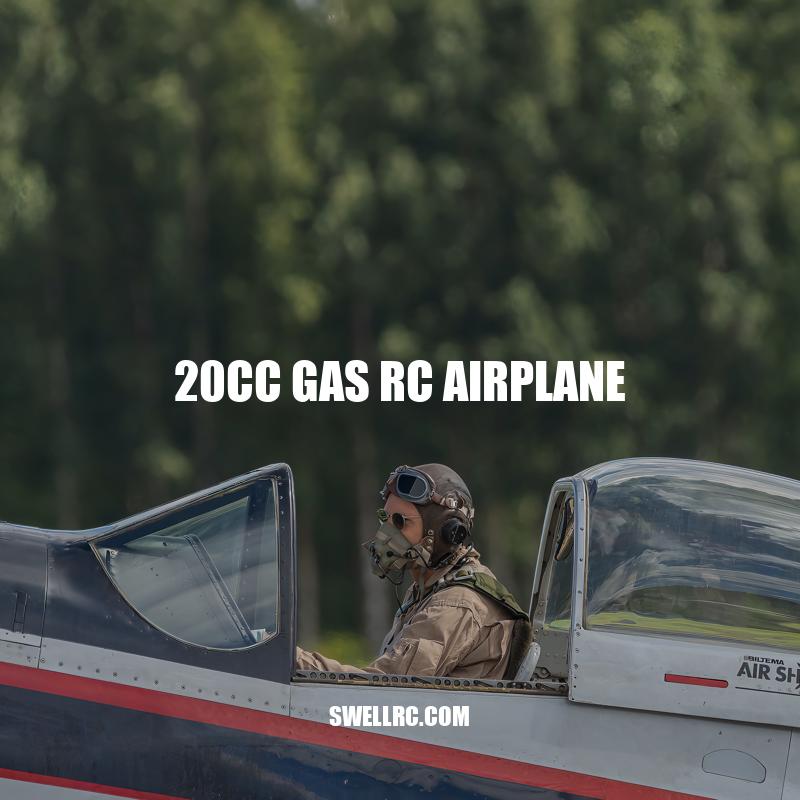Guide to 20cc Gas RC Airplanes: Building, Flying and Maintenance Tips
Gas-powered remote control airplanes have long been a favorite among aviation enthusiasts. Their realistic design and intricate controls provide hobbyists with the thrill of flying and the satisfaction of crafting something of their own. The 20cc gas RC airplane is a popular model amongst remote control airplane enthusiasts due to its durability, ease of operation, and ease of maintenance. With a body length of around 70 inches and a wingspan of over 80 inches, the 20cc gas RC airplane is a stunning representation of the real-life aircraft it is modelled after. The engine, weighing around 1 pounds, provides a maximum of 2 horsepower, allowing it to reach high speeds and perform stunts with ease. Unlike its electric-powered counterparts, the 20cc gas RC airplane is easy and inexpensive to maintain, making it the ideal choice for beginners and seasoned hobbyists alike. From building and flying to maintenance and upkeep, this article will explore everything that you need to know about the 20cc gas RC airplane.
Choosing the Right 20cc Gas RC Airplane
Choosing the right 20cc gas RC airplane requires consideration of several factors. Some of these include:
- Skill level: Some models are designed for beginners, while others are targeted towards more experienced pilots. Choose one appropriate for your skill level.
- Intended use: Different planes are suitable for aerobatics, speed racing or just basic flying.
- Design: The beauty of a remote control airplane depends on its design and craftsmanship. Choose a model that appeals to you.
- Budget: Different models come with varying costs. Consider your budget and pick an option that is affordable for you.
When shopping for the ideal 20cc gas RC airplane, be sure to do your research to evaluate the different models available in the market. Online reviews from other hobbyists can give you valuable insights into the strengths and weaknesses of different models. Websites like rcgroups.com, horizonhobby.com, and towerhobbies.com can provide unbiased reviews of different models to aid in your decision-making. Take your time and make sure you find the right model that is perfect for your needs and will give you the best flying experience.
What factors need to be considered when designing an airplane?
When designing an airplane, one needs to consider the primary factors such as strength, weight, and reliability. These factors determine the requirements for the materials used to construct and repair the aircraft. Airframe structures must be strong and light in weight to ensure the safety and efficiency of the aircraft. Other factors include aerodynamics, engines, avionics, and passenger comfort. To learn more about the design and manufacturing of airplanes, visit websites like Boeing or Airbus.
Building and Flying 20cc Gas RC Airplanes
Building and flying a 20cc gas RC airplane is an exciting experience for any RC enthusiast. Here are some steps to consider when building and flying a gas-powered RC airplane.
- Build your 20cc gas-powered RC airplane by following the kit instructions carefully.
- Install the gas engine, control systems, and radio receiver in the plane.
- Ensure all parts and systems are secure, and the control surfaces move freely.
- Choose a safe location to fly the RC airplane, away from power lines, buildings, and people.
- Perform a pre-flight check before taking off. This includes checking control surfaces, engine, and fuel tank.
- Start the engine and take off carefully, gaining altitude gradually.
- Be prepared to make any necessary adjustments to the controls during flight.
- Take care to land the plane gently, making sure it lands on the wheels or landing gear.
It is important to remember that building and flying an RC airplane requires patience and attention to detail. With practice, you can gain experience and improve your skills in handling 20cc gas RC airplanes.
There are several websites that offer further guidance on building and flying gas-powered RC airplanes. Rcgroups.com and rcuniverse.com are excellent resources that provide step-by-step tutorials, product reviews, and online forums where you can interact with other hobbyists and get valuable advice.
The table below compares some popular 20cc gas RC airplane models available in the market.
| Model | Wingspan | Weight | Price |
|---|---|---|---|
| Hangar 9 P-51D Mustang | 69.5 in. | 11.2 lbs. | $599.99 |
| Phoenix Model Stuka Ju 87 | 64 in. | 10.5 lbs. | $639.99 |
| Goldwing ARF Yak 55M | 76.8 in. | 13.5 lbs. | $549.95 |
Can you build your own RC plane?
Yes, you can build your own RC plane by simply acquiring the main components of a plane such as the body, wings, rudder, wheels, motor and radio transmitter. Building RC airplanes has become easier in recent times due to the availability of less expensive radio equipment and more efficient batteries and motors. There are also various online resources and tutorials available that can guide you through the process of building an RC plane.
Maintenance and Upkeep of 20cc Gas RC Airplanes
Proper maintenance and upkeep are crucial for ensuring the longevity and optimal performance of your 20cc gas RC airplane. Here are some tips to consider when maintaining your gas-powered RC airplane:
- Perform an after-flight check after each use, including inspecting all parts and systems for damage or wear.
- Regularly clean the engine and fuel tank, and replace the fuel filter as needed.
- Check and tune the engine regularly to ensure it is performing optimally.
- Inspect and replace the propeller if you notice any damage or signs of wear and tear.
- Store the RC airplane away from moisture and extreme temperatures, and cover it with a protective sheet.
In addition to maintenance tips, there are several products you can use to ensure your gas-powered RC airplane remains in good condition. These include fuel tubing, after-run oil, and engine diagnostic and tuning tools.
Some websites that provide comprehensive information on maintenance and upkeep of gas-powered RC airplanes include the AMA (Academy of Model Aeronautics) and the RC airplane manufacturer’s website.
Maintenance is a critical part of owning a 20cc gas RC airplane, and it should be done regularly to guarantee its optimal functionality. An investment in upkeep gets you a long way.
How long can a RC plane last?
The duration of RC planes depends on several factors, such as battery life, engine quality, and maintenance. On average, an RC plane can last anywhere from a few months to several years with proper care. It’s important to recharge the battery after each use and store it in a cool, dry place. Regular maintenance and repairs can also extend the lifespan of your RC plane. If you’re interested in purchasing a high-quality RC plane, be sure to check out specialized websites such as Horizon Hobby or Hobbytron for a wide selection of options.
Conclusion
Owning and flying a 20cc gas RC airplane can be an exciting and rewarding hobby for anyone interested in model aircraft. These planes offer a realistic and engaging flying experience, and with proper maintenance, they can last for many years to come.
Whether you are a beginner or an experienced RC airplane enthusiast, there are plenty of resources available to help you get started with a 20cc gas RC airplane. From selecting the right model to building and flying the airplane, there are many steps to this process, and they can be both challenging and enjoyable.
In summary, if you are looking for an engaging and adaptable hobby that offers both a challenging learning curve and a great deal of satisfaction, 20cc gas RC airplanes are a fantastic choice. By following the tips and guidelines in this article, you can ensure that you get the most out of your gas-powered RC airplane, and continue to enjoy this hobby for years to come. So, grab a model and take to the sky – the world of 20cc gas RC airplanes awaits you!



